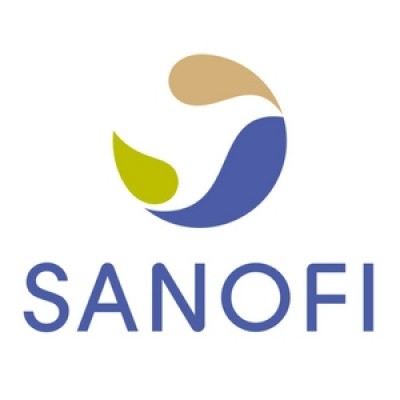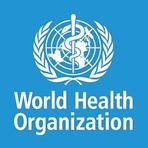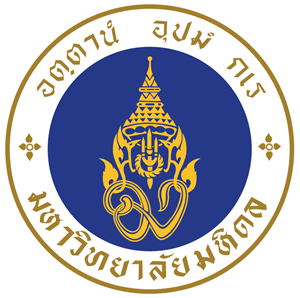Sanofi's Mission: Shielding Vulnerable Populations from Influenza
May 22, 2025, 6:40 am

Location: United States, Massachusetts, Cambridge
Employees: 10001+
Founded date: 1981
Total raised: $1.1B

Location: Switzerland, Geneva, Chambésy
Employees: 5001-10000
Founded date: 1948

Location: Thailand, Nakhon Pathom Province, Sala Ya
Employees: 11-50
Founded date: 1943
In the bustling heart of Bangkok, a significant event unfolded. Sanofi, a titan in biopharmaceutical innovation, hosted a hybrid symposium titled “Safeguarding High-Risk Groups: The Importance of Flu Prevention and Effective Communication.” This gathering was not just another meeting; it was a clarion call. A call to arms for healthcare professionals across South-East Asia and India, uniting them in the fight against seasonal influenza.
The stakes are high. Seasonal influenza is a silent predator, disproportionately affecting those most vulnerable. Adults aged 65 and older, individuals with chronic conditions like diabetes, and those battling cardiovascular diseases are at the greatest risk. The numbers are staggering. According to the World Health Organization, influenza affects about 1 billion people globally each year. Of these, 3-5 million develop severe illness, leading to 290,000-650,000 deaths. These figures paint a grim picture, especially for high-risk groups.
The symposium featured a keynote address by Prof. Sasisopin Kiertiburanakul from Mahidol University. His insights into regional influenza epidemiology were both enlightening and alarming. He emphasized the severe complications that influenza can trigger, including pneumonia and heart attacks. For vulnerable populations, influenza is not just a seasonal nuisance; it can be a death sentence.
Vaccination is the shield against this threat. Prof. Kiertiburanakul highlighted that flu vaccination is safe and effective. It significantly reduces hospitalizations and mortality rates among the most vulnerable. Investing in flu vaccination is not just a health measure; it’s a commitment to public health.
Interactive sessions at the symposium allowed medical experts from Malaysia and Vietnam to share their perspectives. They discussed the critical importance of flu vaccination for high-risk groups. Despite varying attitudes towards vaccines, the consensus was clear: improving access to flu immunization is essential. Effective communication strategies are key to achieving the World Health Organization’s target of 75% vaccination coverage among high-risk populations.
Sanofi’s Vaccines Medical Head for Southeast Asia and India, Ruby Dizon, reinforced this message. She articulated the need for a comprehensive approach to protect vulnerable groups. The symposium aimed to empower healthcare professionals with the tools and knowledge necessary to safeguard those at risk. It was a moment of unity, a collective effort to combat misinformation and improve health outcomes.
Participants left with practical insights. They learned how to address common misconceptions about influenza prevention. They gained techniques for framing conversations around the specific benefits of vaccination for high-risk patients. This knowledge is crucial. It equips healthcare professionals to advocate for their patients effectively.
The call to action was clear. Healthcare professionals must unite to protect vulnerable groups through appropriate flu vaccination. For high-risk individuals, this protection goes beyond merely avoiding the flu. It is about preventing potentially devastating complications that can arise from the virus.
Sanofi’s commitment to reducing the global burden of influenza is unwavering. They are not just providing vaccines; they are fostering a culture of awareness and education. By supporting healthcare professionals with evidence-based strategies, they are enhancing the quality of life for many.
The fight against influenza is ongoing. Each year, as the flu season approaches, the urgency grows. The burden of influenza is not just a statistic; it is a reality for millions. The symposium in Bangkok was a reminder of the collective responsibility we share. Protecting the vulnerable is not just a healthcare issue; it is a moral imperative.
In conclusion, Sanofi’s initiative to host this symposium is a beacon of hope. It highlights the importance of collaboration in public health. By bringing together experts and healthcare professionals, they are laying the groundwork for a healthier future. The message is clear: we must act now. Protecting high-risk groups from influenza is not just about vaccines; it’s about safeguarding lives. The fight against influenza is a battle we must win, for the sake of our communities and the vulnerable among us.
The stakes are high. Seasonal influenza is a silent predator, disproportionately affecting those most vulnerable. Adults aged 65 and older, individuals with chronic conditions like diabetes, and those battling cardiovascular diseases are at the greatest risk. The numbers are staggering. According to the World Health Organization, influenza affects about 1 billion people globally each year. Of these, 3-5 million develop severe illness, leading to 290,000-650,000 deaths. These figures paint a grim picture, especially for high-risk groups.
The symposium featured a keynote address by Prof. Sasisopin Kiertiburanakul from Mahidol University. His insights into regional influenza epidemiology were both enlightening and alarming. He emphasized the severe complications that influenza can trigger, including pneumonia and heart attacks. For vulnerable populations, influenza is not just a seasonal nuisance; it can be a death sentence.
Vaccination is the shield against this threat. Prof. Kiertiburanakul highlighted that flu vaccination is safe and effective. It significantly reduces hospitalizations and mortality rates among the most vulnerable. Investing in flu vaccination is not just a health measure; it’s a commitment to public health.
Interactive sessions at the symposium allowed medical experts from Malaysia and Vietnam to share their perspectives. They discussed the critical importance of flu vaccination for high-risk groups. Despite varying attitudes towards vaccines, the consensus was clear: improving access to flu immunization is essential. Effective communication strategies are key to achieving the World Health Organization’s target of 75% vaccination coverage among high-risk populations.
Sanofi’s Vaccines Medical Head for Southeast Asia and India, Ruby Dizon, reinforced this message. She articulated the need for a comprehensive approach to protect vulnerable groups. The symposium aimed to empower healthcare professionals with the tools and knowledge necessary to safeguard those at risk. It was a moment of unity, a collective effort to combat misinformation and improve health outcomes.
Participants left with practical insights. They learned how to address common misconceptions about influenza prevention. They gained techniques for framing conversations around the specific benefits of vaccination for high-risk patients. This knowledge is crucial. It equips healthcare professionals to advocate for their patients effectively.
The call to action was clear. Healthcare professionals must unite to protect vulnerable groups through appropriate flu vaccination. For high-risk individuals, this protection goes beyond merely avoiding the flu. It is about preventing potentially devastating complications that can arise from the virus.
Sanofi’s commitment to reducing the global burden of influenza is unwavering. They are not just providing vaccines; they are fostering a culture of awareness and education. By supporting healthcare professionals with evidence-based strategies, they are enhancing the quality of life for many.
The fight against influenza is ongoing. Each year, as the flu season approaches, the urgency grows. The burden of influenza is not just a statistic; it is a reality for millions. The symposium in Bangkok was a reminder of the collective responsibility we share. Protecting the vulnerable is not just a healthcare issue; it is a moral imperative.
In conclusion, Sanofi’s initiative to host this symposium is a beacon of hope. It highlights the importance of collaboration in public health. By bringing together experts and healthcare professionals, they are laying the groundwork for a healthier future. The message is clear: we must act now. Protecting high-risk groups from influenza is not just about vaccines; it’s about safeguarding lives. The fight against influenza is a battle we must win, for the sake of our communities and the vulnerable among us.